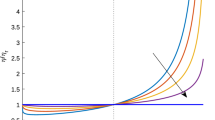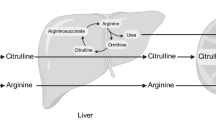Abstract
It is widely accepted that the primary immune system contains a subpopulation of cells, known as regulatory T cells whose function is to regulate the immune response. There is conflicting biological evidence regarding the ability of regulatory cells to lose their regulatory capabilities and turn into immune promoting cells. In this paper, we develop mathematical models to investigate the effects of regulatory T cell switching on the immune response. Depending on environmental conditions, regulatory T cells may transition, becoming effector T cells that are immunostimulatory rather than immunoregulatory. We consider this mechanism both in the context of a simple, ordinary differential equation (ODE) model and in the context of a more biologically detailed, delay differential equation (DDE) model of the primary immune response. It is shown that models that incorporate such a mechanism express the usual characteristics of an immune response (expansion, contraction, and memory phases), while being more robust with respect to T cell precursor frequencies. We characterize the affects of regulatory T cell switching on the peak magnitude of the immune response and identify a biologically testable range for the switching parameter. We conclude that regulatory T cell switching may play a key role in controlling immune contraction.














Similar content being viewed by others
References
Althaus, C., Ganusov, V., & De Boer, R. (2007). Dynamics of CD8+ T cell responses during acute and chronic lymphocytic choriomeningitis virus infection. J. Immunol., 179(5), 2944.
Antia, R. (2003). Models of CD8+ responses: 1. What is the antigen-independent proliferation program. J. Theor. Biol., 221(4), 585–598.
Apostolou, I., & vonBoehmer, H. (2004). In vivo instruction of suppressor commitment in naïve t cells. J. Exp. Med., 199(10), 1401–1408.
Badovinac, V. P., Haring, J. S., & Harty, J. T. (2007). Initial T cell receptor transgenic cell precursor frequency dictates critical aspects of the CD8(+) T cell response to infection. Immunity, 26(6), 827–841.
Baecher-Allan, C., Viglietta, V., & Hafler, D. A. (2004). Human CD4+CD25+ regulatory T cells. Semin. Immunol., 16(2), 89–98.
Belkaid, Y., Piccirillo, C., Mendez, S., Shevach, E., & Sacks, D. (2002). CD4+CD25+ regulatory T cells control leishmania major persistence and immunity. Nature, 420(6915), 502–507.
Belz, G. T., Zhang, L., Lay, M. D. H., Kupresanin, F., & Davenport, M. P. (2007). Killer t cells regulate antigen presentation for early expansion of memory, but not naive, cd8+ t cell. Proc. Natl. Acad. Sci. USA, 104(15), 6341–6346.
Brandt, L., Benfield, T., Mens, H., Clausen, L. N., Katzenstein, T. L., Fomsgaard, A., & Karlsson, I. (2011). Low level of regulatory T cells and maintenance of balance between regulatory T cells and TH17 cells in HIV-1-infected elite controllers. J. Acquir. Immune Defic. Syndr., 57(2), 101–108.
Callard, R., George, A. J., & Stark, J. (1999). Cytokines, chaos, and complexity. Immunity, 11(5), 507–513.
Catron, D. M., Itano, A. A., Pape, K. A., Mueller, D. L., & Jenkins, M. K. (2004). Visualizing the first 50 hr of the primary immune response to a soluble antigen. Immunity, 21(3), 341–347.
Chen, W., Jin, W., Hardegen, N., Lei, K., Li, L., Marinos, N., McGrady, G., & Wahl, S. (2003). Conversion of peripheral CD4+CD25- naïve T cells to CD4+CD25+ regulatory T cells by TGF-β induction of transcription factor Foxp3. J. Exp. Med., 198(12), 1875–1886.
De Boer, R. J., Homann, D., & Perelson, A. S. (2003). Different dynamics of CD4+ and CD8+ T cell responses during and after acute lymphocytic choriomeningitis virus infection. J. Immunol., 171(8), 3928–3935.
Dejaco, C., Duftner, C., Grubeck-Loebenstein, B., & Schirmer, M. (2006). Imbalance of regulatory T cells in human autoimmune diseases. Immunology, 117(3), 289–300.
Duarte, J., Zelenay, S., Bergman, M.-L., Martins, A., & Demengeot, J. (2009). Natural Treg cells spontaneously differentiate into pathogenic helper cells in lymphopenic conditions. Eur. J. Immunol., 39(4), 948–955.
Fehérvári, Z., & Sakaguchi, S. (2004). Control of Foxp3+ CD25+CD4+ regulatory cell activation and function by dendritic cells. Int. Immunol., 16(12), 1769–1780.
Fishman, M. A., & Perelson, A. S. (1999). Th1/Th2 differentiation and cross-regulation. Bull. Math. Biol., 61(3), 403–436.
Ghiringhelli, F., Larmonier, N., Schmitt, E., Parcellier, A., Cathelin, D., Garrido, C., Chauffert, B., Solary, E., Bonnotte, B., & Martin, F. (2004). CD4+CD25+ regulatory T cells suppress tumor immunity but are sensitive to cyclophosphamide which allows immunotherapy of established tumors to be curative. Eur. J. Immunol., 34(2), 336–344.
Hong, T., Xing, J., Li, L., & Tyson, J. J. (2011). A mathematical model for the reciprocal differentiation of T helper 17 cells and induced regulatory T cells. PLoS Comput. Biol., 7(7), e1002122.
Huehn, H. A. J. (2005). Homing to suppress: address codes for treg migration. Trends Immunol., 26(12), 632–636.
Huehn, J., Polansky, J. K., & Hamann, A. (2009). Epigenetic control of FOXP3 expression: the key to a stable regulatory T-cell lineage? Nat. Rev. Immunol., 9(2), 83–89.
Kaech, S. M., & Ahmed, R. (2001). Memory CD8+ T cell differentiation: initial antigen encounter triggers a developmental program in naïve cells. Nat. Immunol., 2(5), 415–422.
Kim, P., Lee, P., & Levy, D. (2010). Emergent group dynamics governed by regulatory cells produce a robust primary t cell response. Bull. Math. Biol., 72, 611–644.
Kim, P., Lee, P., & Levy, D. (2012). Basic principles in modeling adaptive regulation and immunodominance. In A. Friedman, E. Kashdan, U. Ledzewicz, & H. Schättler (Eds.), Mathematical models and methods in biomedicine. Berlin: Springer.
Kim, P. S., Lee, P. P., & Levy, D. (2011). A theory of immunodominance and adaptive regulation. Bull. Math. Biol., 73(7), 1645–1665.
Klein, L., Khazaie, K., & vonBoehmer, H. (2003). In vivo dynamics of antigen-specific regulatory T cells not predicted from behavior in vitro. Proc. Natl. Acad. Sci. USA, 100(15), 8886–8891.
Kretschmer, K., Apostolou, I., Hawiger, D., Khazaie, K., Nussenzweig, M., & vonBoehmer, H. (2005). Inducing and expanding regulatory T cell populations by foreign antigen. Nat. Immunol., 6(12), 1219–1227.
Mercado, R., Vijh, S., Allen, S. E., Kerksiek, K., Pilip, I. M., & Pamer, E. G. (2000). Early programming of T cell populations responding to bacterial infection. J. Immunol., 165(12), 6833–6839.
Miyara, S. S. M. (2007). Natural regulatory T cells: mechanisms of suppression. Trends Mol. Med., 13(3), 108–116.
Mohri, H., Perelson, A. S., Tung, K., Ribeiro, R. M., Ramratnam, B., Markowitz, M., Kost Hurley, R., Weinberger, L., Cesar, D., Hellerstein, M. K., & Ho, D. D. (2001). Increased turnover of T lymphocytes in HIV-1 infection and its reduction by antiretroviral therapy. J. Exp. Med., 194(9), 1277–1288.
Murphy, K., Travers, P., & Walport, M. (2008). Immunobiology. New York: Garland Science.
Nowak, M. (1996). Immune responses against multiple epitopes: a theory for immunodominance and antigenic variation. Semin. Virol., 7(1), 83–92.
Razvi, E. S., Jiang, Z., Woda, B. a., & Welsh, R. M. (1995). Lymphocyte apoptosis during the silencing of the immune response to acute viral infections in normal, lpr, and Bcl-2-transgenic mice. Am. J. Pathol., 147(1), 79–91.
Renno, T., Attinger, A., Locatelli, S., Bakker, T., Vacheron, S., & MacDonald, H. R. (1999). Cutting edge: apoptosis of superantigen-activated T cells occurs preferentially after a discrete number of cell divisions in vivo. J. Immunol., 162(11), 6312–6315.
Rubtsov, Y. P., Niec, R. E., Josefowicz, S., Li, L., Darce, J., Mathis, D., Benoist, C., & Rudensky, a. Y. (2010). Stability of the regulatory T cell lineage in vivo. Science, 329(5999), 1667–1671.
Sakaguchi, S. (2010). Conditional stability of T cells. Nature, 468, 41–42.
Sakaguchi, S., Yamaguchi, T., Nomura, T., & Ono, M. (2008). Regulatory T cells and immune tolerance. Cell, 133(5), 775–787.
Sather, B., Treuting, P., Perdue, N., Miazgowicz, M., Fontenot, J., Rudensky, A., & Campbell, D. (2007). Altering the distribution of Foxp3+ regulatory T cells results in tissue-specific inflammatory disease. J. Exp. Med., 204(6), 1335–1347.
Shevach, E. (2006). From vanilla to 28 flavors: multiple varieties of T regulatory cells. Immunity, 25(2), 195–201. Cited by (since 1996), 280.
Taams, L. S., Vukmanovic-Stejic, M., Smith, J., Dunne, P. J., Fletcher, J. M., Plunkett, F. J., Ebeling, S. B., Lombardi, G., Rustin, M. H., Bijlsma, J. W. J., Lafeber, F. P. J. G., Salmon, M., & Akbar, A. N. (2002). Antigen-specific T cell suppression by human CD4+CD25+ regulatory T cells. Eur. J. Immunol., 32(6), 1621–1630.
Tang, Q., Adams, J. Y., Tooley, A. J., Bi, M., Fife, B. T., Serra, P., Santamaria, P., Locksley, R. M., Krummel, M. F., & Bluestone, J. A. (2006). Visualizing regulatory T cell control of autoimmune responses in nonobese diabetic mice. Nat. Immunol., 7(1), 83–92.
van Stipdonk, M. J., Hardenberg, G., Bijker, M. S., Lemmens, E. E., Droin, N. M., Green, D. R., & Schoenberger, S. P. (2003). Dynamic programming of CD8+ T lymphocyte responses. Nat. Immunol., 4(4), 361–365.
von Boehmer, H. (2005). Mechanisms of suppression by suppressor T cells. Nat. Immunol., 6(4), 338–344.
Wodarz, D., & Thomsen, A. R. (2005). Effect of the CTL proliferation program on virus dynamics. Int. Immunol., 17(9), 1269–1276.
Yamaguchi, T., Hirota, K., Nagahama, K., Ohkawa, K., Takahashi, T., Nomura, T., & Sakaguchi, S. (2007). Control of immune responses by antigen-specific regulatory T cells expressing the folate receptor. Immunity, 27(1), 145–159.
Yamazaki, S., Iyoda, T., Tarbell, K., Olson, K., Velinzon, K., Inaba, K., & Steinman, R. (2003). Direct expansion of functional CD25+ CD4+ regulatory T cells by antigen-processing dendritic cells. J. Exp. Med., 198(2), 235–247.
Yang, Y., Kim, D., & Fathman, C. G. (1998). Regulation of programmed cell death following t cell activation in vivo. Int. Immunol., 10(2), 175–183.
Yates, A., Bergmann, C., Van Hemmen, J. L., Stark, J., & Callard, R. (2000). Cytokine-modulated regulation of helper T cell populations. J. Theor. Biol., 206(4), 539–560.
Zhou, X., Bailey-Bucktrout, S. L., Jeker, L. T., Penaranda, C., Martínez-Llordella, M., Ashby, M., Nakayama, M., Rosenthal, W., & Bluestone, J. A. (2009). Instability of the transcription factor Foxp3 leads to the generation of pathogenic memory T cells in vivo. Nat. Immunol., 10(9), 1000–1007.
Acknowledgements
We would like to thank Peter Kim for sharing his code. This work was supported in part by the joint NSF/NIGMS program under Grant Number DMS-0758374 and in part by Grant Number R01CA130817 from the National Cancer Institute. The content is solely the responsibility of the authors and does not necessarily represent the official views of the National Cancer Institute or the National Institutes of Health.
Author information
Authors and Affiliations
Corresponding author
Rights and permissions
About this article
Cite this article
Wilson, S., Levy, D. Functional Switching and Stability of Regulatory T Cells. Bull Math Biol 75, 1891–1911 (2013). https://doi.org/10.1007/s11538-013-9875-9
Received:
Accepted:
Published:
Issue Date:
DOI: https://doi.org/10.1007/s11538-013-9875-9




